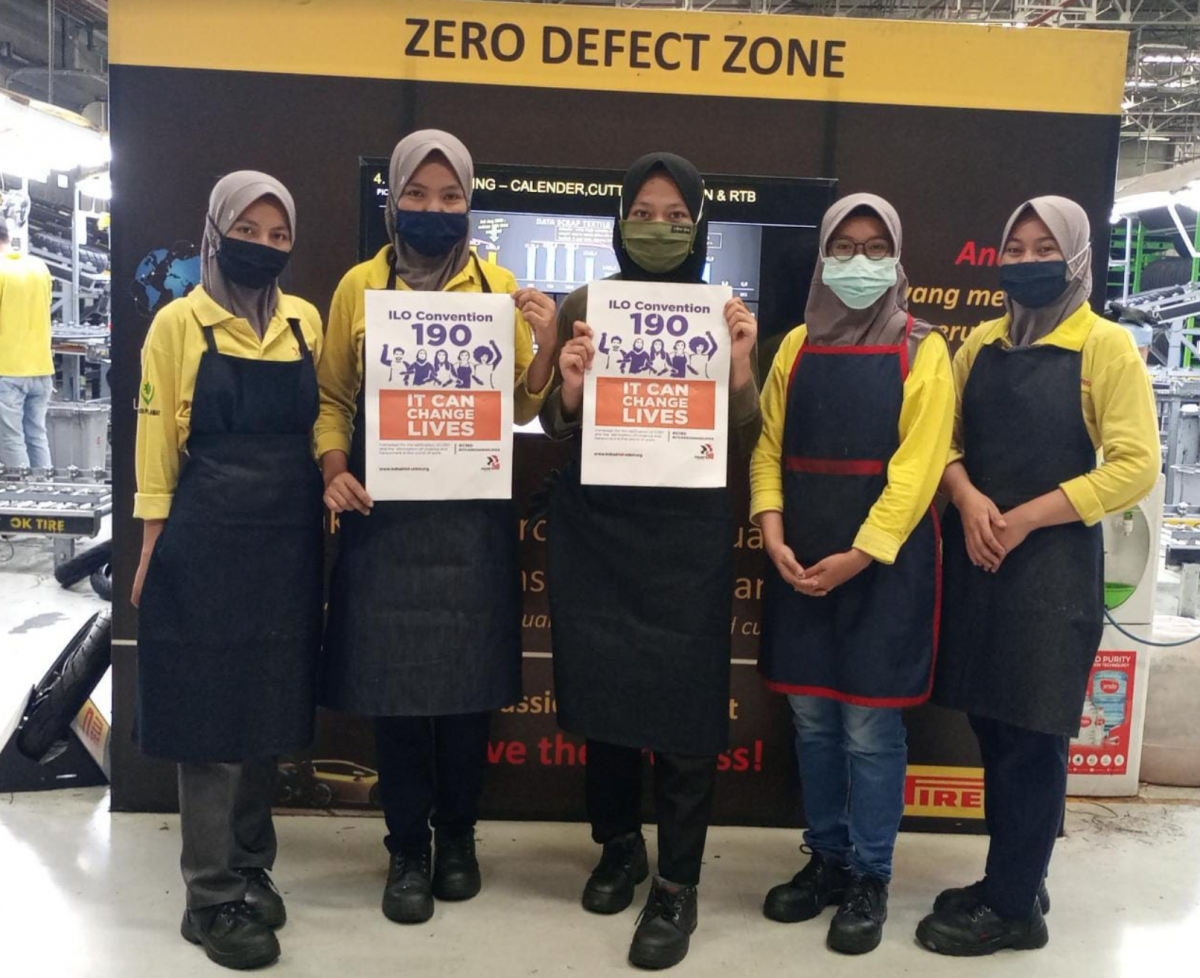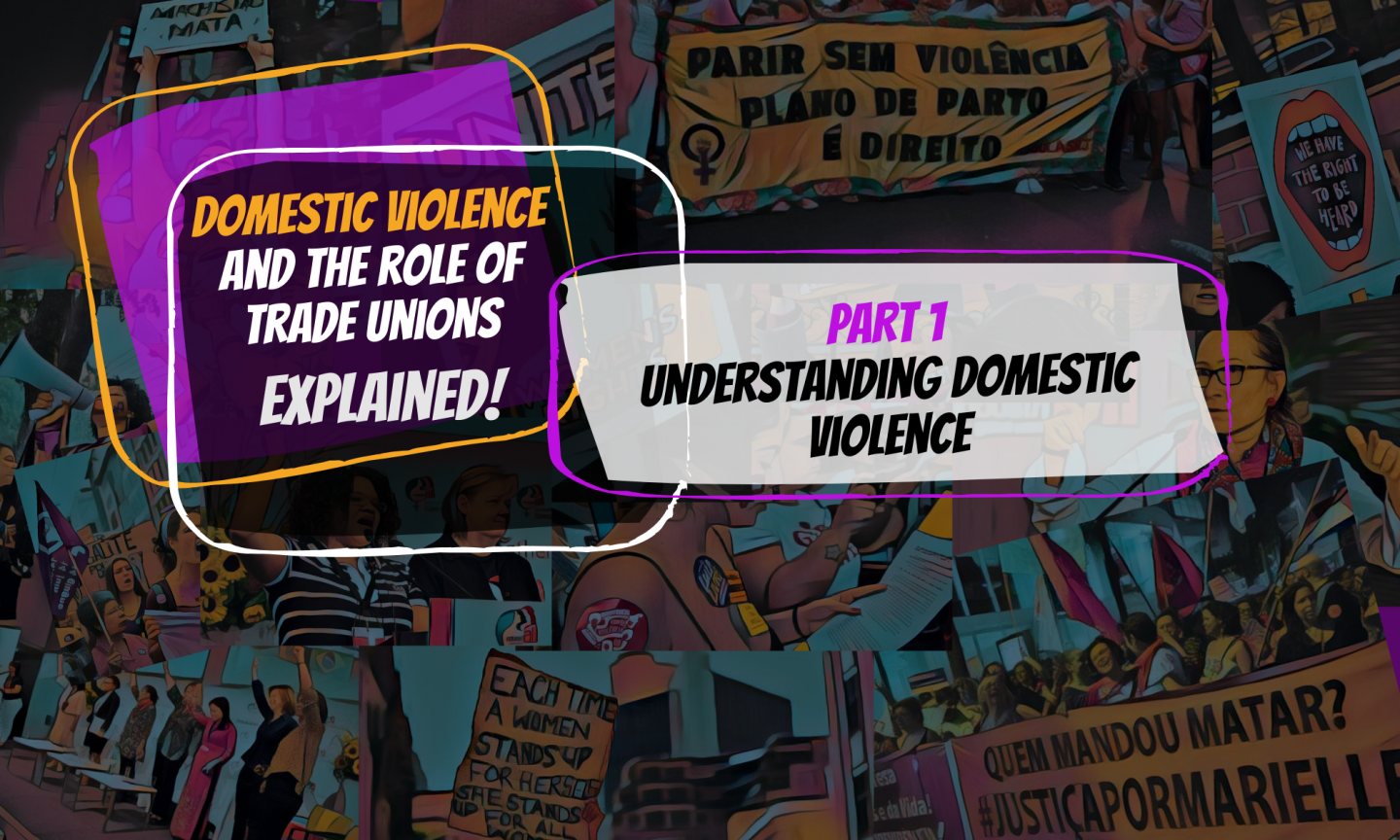10 December, 2020PART 1: "Domestic violence and the role of trade unions explained". Gaining a better understanfing of what domestic violence is.
Although domestic violence may originate in the home, it can spill over into the world of work. Domestic violence is also a health and safety issue, representing a risk for the health and safety of the victims/survivors, as well as their co-workers.
1. What is domestic violence?
Domestic violence includes all acts of physical, sexual, psychological or economic violence that occur within the family or domestic unit or between former or current spouses or partners. Domestic violence is a pattern of behaviour used by one person to control or dominate another with whom they have, or have had, an intimate or family-type relationship.
Psychological abuse can take different forms such as stalking, harassment or coercive control. Through coercive control, the perpetrators’ behaviour intends to make victims/survivors subordinate and/or dependent through threats, humiliation, and intimidation or other abuse that is used to harm, punish, frighten and isolate from any support a victim/survivor.
Through economic violence, the abuser intends to prevent a person from accessing employment opportunities and economic resources.
Experience of domestic violence can lead to long term physical, mental and emotional health problems; in the most extreme cases, violence against women can lead to death. It is one of the most extreme forms of oppression a woman can experience.
Sources: Istanbul Convention; Unite the Union Domestic Violence & Abuse – a negotiators guide; ILO report, 2018.
2. What is the difference between domestic violence, family violence and intimate partner violence?
Intimate partner violence refers to “physical, sexual or psychological harm by a current or former partner or spouse.” Domestic violence refers to “partner violence but […] can also encompass child or elder abuse, or abuse by any member of a household”. Family violence refers to “child maltreatment, sibling violence, intimate partner violence and elder abuse.”
Source: ILO Brief on Domestic violence and its impact in the world of work, 2020
3. Victim or survivor of domestic violence?
How do we describe individuals who seek help during or after they have left a violent relationship?
The terms “victim” and “survivor” are both used, depending on the context. The word "victim" is used by members of law enforcement and within the context of courtroom proceedings. However, people may prefer the term “survivor” which emphasizes an active, resourceful and creative response to the abuse, in contrast to “victim”, which may imply passive acceptance.
In the end, it is imperative to follow the lead of the person seeking support, since the journey from victim to survivor is unique to each person. To that end, many are beginning to use the term victim/survivor.
Source: The Survivor’s Handbook, Women’s Aid, THE LANGUAGE WE USE, Women against abuse
4. Who are the main victims/survivors of domestic violence?
Everyone can be victim/ survivor or perpetrator of domestic violence. People experience domestic violence regardless of their gender, ethnicity, class, age, race, religion, disability, sexual orientation or gender identity.
However, evidence is clear that the majority of those who suffer domestic violence, as understood as intimate partner violence, are women and majority of perpetrators are men.
Globally, 35 per cent of women have experienced physical and/or sexual intimate partner violence, or sexual violence by a non-partner. Intimate partner violence accounts for the majority of women’s experiences of violence. 137 women are killed by a member of their family every day.
Domestic violence is a manifestation of gender based violence.
Gender-based violence and violence against women are two terms that are often used interchangeably, as most violence against women is inflicted (by men) for gender-based reasons, and gender-based violence affects women disproportionately. Gender-based violence against women shall mean violence that is directed against a woman because she is a woman or that affects women disproportionately.
Sources: Facts and figures: Ending violence against women, UN Women; Declaration on the Elimination of Violence against Women, UN 1993
5. Why do women represent the majority of the victims/survivors of domestic violence?
Domestic violence is an abuse of power. Violence against women is a manifestation of historically unequal power relations between men and women. This has led to domination over, and discrimination against, women by men. It has also prevented women from fully advancing; violence against women is one of the crucial social mechanisms by which women are forced into a subordinate position compared with men.
Violence against women, be it in public or private spaces, is deeply rooted in the social and cultural structures, norms and values that govern society, including patriarchy societies and is often perpetuated by a culture of denial and silence.
Source: Declaration on the Elimination of Violence against Women, UN 1993

6. Are some women more at risks than others?
All woman can experience domestic violence, regardless of gender, age, ethnicity, socio-economic status, religion, sexual orientation and gender identity. However, some groups of women are at higher risk, including young disabled, bisexual and migrant women.
Shame and dishonour are powerful cultural notions, and some minority women may face social ostracism and rejection if they seek help. Lesbians and gay men can also experience domestic violence, and may experience prejudice from the police and within support services; and the situation of trans men and women needs particular recognition. Additional barriers are also faced by older women, disabled women, men, and those living in rural areas.
Source: TUC, Support in the workplace for victims of domestic abuse; Unite the Union Domestic Violence & Abuse – a negotiators guide
